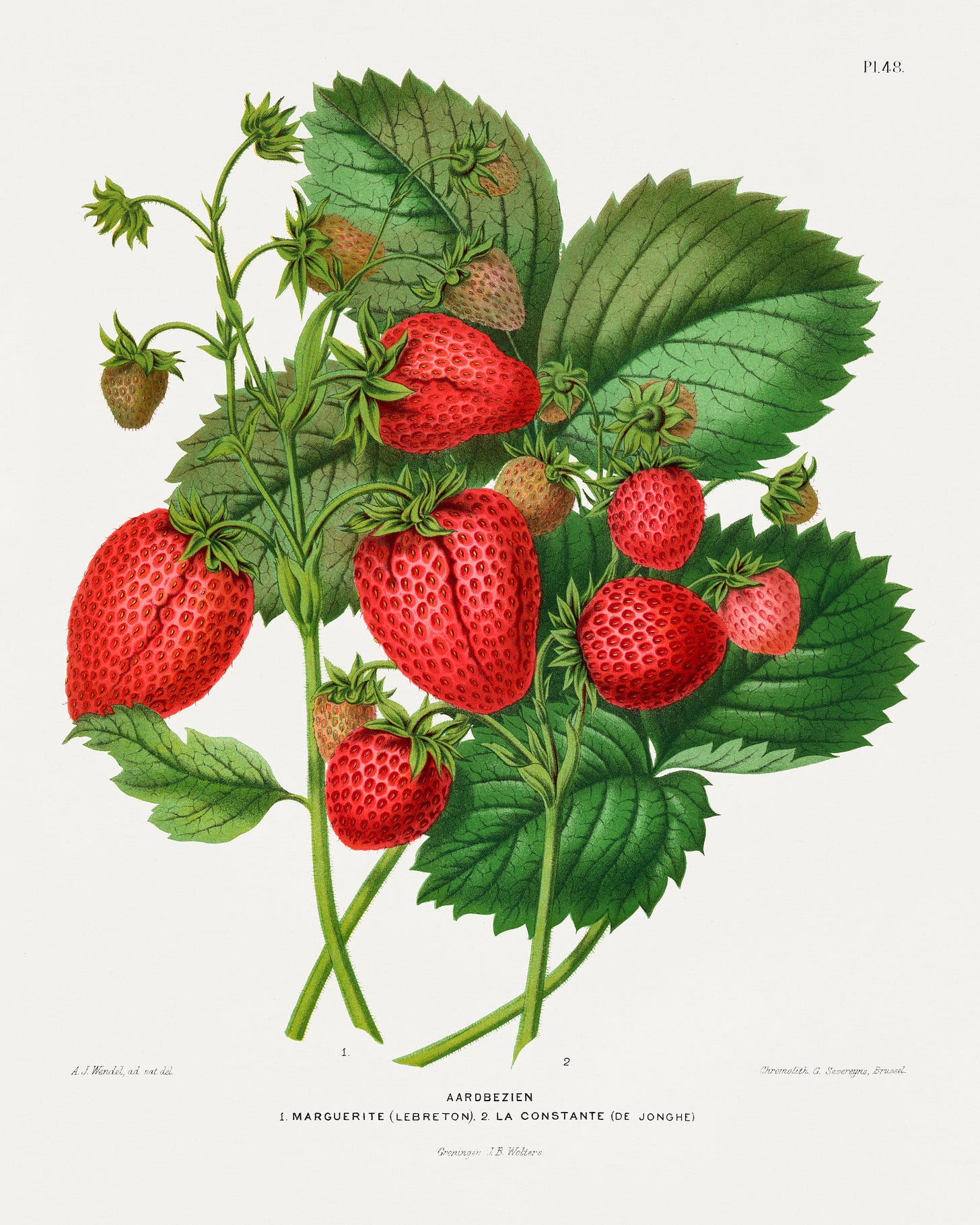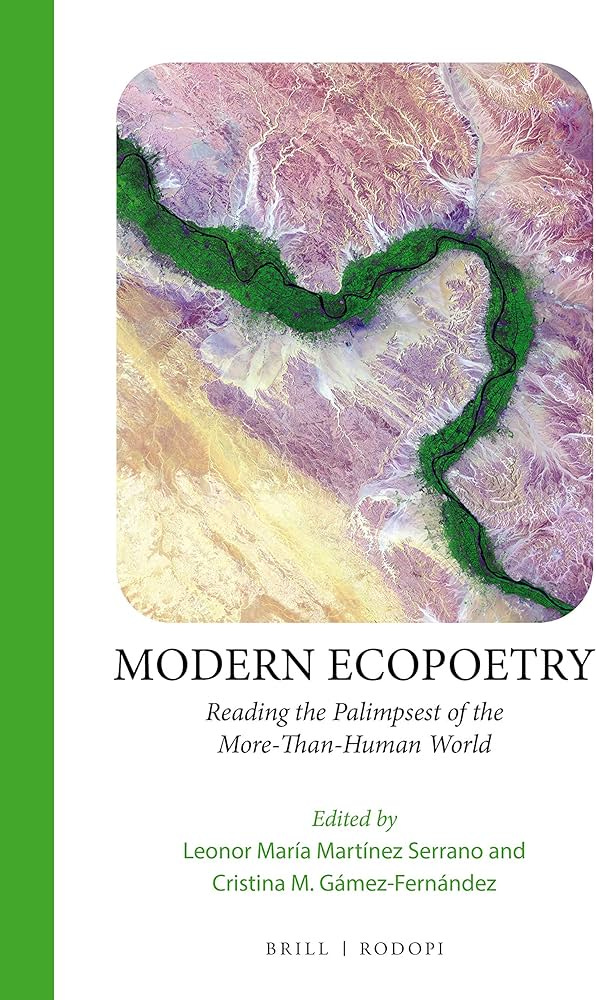🌿Wild Poetics #2: An Ecopoetry Newsletter
Modern Ecopoetry: Reading the Palimpsest of the More-Than-Human World. (2020).

Hi everyone, welcome back to Wild Poetics, a (usually) weekly ecopoetry digest by me, Gavin Lamb, sharing my journey learning about the world of environmental poetry with weekly updates on poems I’m reading, and news, ideas and research in ecopoetry. If you’re new, welcome! You can read more about why I started Wild Poetics here. Sign up here to get these digests in your inbox:
📚 Poetry research I’m digging into this week
📖Book: Modern Ecopoetry: Reading the Palimpsest of the More-Than-Human World. Editedy By Leonor María Martínez Serrano and Cristina M. Gámez-Fernández.
In their introduction to Modern Ecopoetry: Reading the Palimpsest of the More-Than-Human World, the editors Leonor María Martínez Serrano and Cristina M. Gámez-Fernández ask: “Can poetry really save the Earth?”
The authors’ question is inspired by a book of the same title—Can Poetry Save the Earth? —by the poet, writer and Stanford English professor John Felstiner who passed away in 2017. In asking this big question, Felstiner wrote,
“Poetry has been changing over the centuries, and so has the earth. While poetry thrives, homo sapiens has slowly and not so slowly been abusing the physical world surrounding us” (2009, xiii, cited in Ecomodern Poetry, p. 8)
However, in noting this mutual relationship between poetry and the earth, the authors of Ecomodern Poetry argue that Felstiner’s question is helpful as it “gently push[es] us to look and listen one more time to the details and threads in the carpet of life, which is larger than each of us as individuals or as members of a global community” (p. 11).
“The carpet of life” is in an interesting phrase, as it invokes an image of a meshwork of threads that come together not just aesthetically but for some larger purpose: to comfort, to protect, or perhaps to welcome. But in the introduction to Ecomodern Poetry Martínez Serrano and Gámez-Fernández bring special insight into the myriad ways ecopoets, as well as a broader array of environmental writers in the past two decades are exploring and reimagining ways of languaging human beings’ relationships to earth. In Felstiner’s words, to qualify as ecopoetic language, this is a language that would seek to “quicken awareness and bolster respect for this ravaged resilient earth we live on” (xiii, 2009).
In addition to Felstiner’s evocative phrasings for doing just this, phrases prime our “alertness to nature” and our “sensory shock of things,” the authors also envision ecopoetry to be in dialogue with a range of critical environmental scholars diagnosing the linguistic limits of the ecological catastrophe. Here, Donna Haraway’s more-than-human invocation of the ‘contact zone’ — a developed by the sociolinguist and literary scholar Marie Louise Pratt —is one place to begin looking. Feminist theorist Stacy Alaimo also invokes the phrase the ‘contact zone’ to describe the entanglements “between human corporeality and more-than-human nature” the authors note. For Alaimo, such a phrase aims to challenge language that would conceal how “the human is always intermeshed with the more-than-human world” (238). The philosopher Jane Bennett’s notion of Vibrant Matter is also an influence. For Bennett, note the authors, we need to find ways of speaking and writing that
“counteract ‘the image of dead or thoroughly instrumentalized matter [that] feeds human hubris and our earth-destroying fantasies of conquest and consumption’ and encourages humans to open themselves to ‘a fuller range of the nonhuman powers circulating around and within human bodies’ (2010, ix), as the nonhuman world has agencies of its own” (cited in Ecomodern Poetry, p. 2).
But for me, while ecopoetry definitely plays a critical role in developing alternative ways of languaging—and therefore paying attention to and learning from—our irreducible entanglement with the more than human world, the question remains: what ethics flows from such a recognition? Is an ability to better recognize how radically entangled human and nonhuman worlds actually where ecopoetry leaves us? Especially in recognizing the depth of the crisis ‘we’ (seeing that the ecological crisis will distribute suffering in radically unequal ways) are in. As Felstiner puts it,
“What can poetry say, much less do, about global warming, seas rising, species endangered, water and air polluted, wilderness road-ridden, rain-forests razed, along with strip mining and mountaintop removal, clearcutting, overfishing, overeating, overconsumption, overdevelopment, overpopulation, and so on and on? Well, next to nothing. [...] Yet next to nothing would still be something.” (p. 7, cited in Modern Ecopoetry, p. 9)
This ‘something’ is not just the capacity for poetry to help us recognize our interdependence with the more-than-human world, or as the ecological philosopher David Abram puts it, our “Commonwealth of Breath” (2014, p. 313). Language, for Abram, the authors point out, is like a meaning-making ‘membrane’ between ourselves and ‘reality at large,’ and this membrane, like any technology, can make it easier or harder to recognize this already existing Commonwealth of Breath, depending on how we use it. The aim, then, as the authors put it in the introduction to Ecomodern Poetry, is to explore ecopoetry as “a compass to a Commonwealth of Breath.” In other words, I take the authors to mean that ecopoetry can help us envision the path for action forward.
This is a rich introduction to current ideas about ecopoetry, and while I have yet to read the rest of the book, I can highly recommend reading the introduction to Ecomodern Poetry to gain a sense of the contemporary ecopoetic landscape.
“At a time of worrying environmental degradation at a global scale, it is therefore of the essence that we, humans, turn to poetry to see how this ancient mode of thinking is responding to one of the most worrying problems that human societies are facing worldwide. After all, poetry represents a powerful inquisitive tool to explore and interrogate the nonhuman world, to understand how Homo sapiens relates to other species and the nonhuman world, and to figure out alternative ways to dwell responsibly on Earth. Hence the persistence of poetry amid the destruction of the world, and poets’ examination of the more-than-human world time and again, essaying variations on the pristine encounter between the observing human subject and the observed natural world—until the thought or insight dawns that humans are tiny elements in the living mesh of things, members of the “Commonwealth of Breath” (2014, 313) in David Abram’s memorable phrasing.”
—From the Introduction: “Finding a Compass to a Commonwealth of Breath”in Modern Ecopoetry: Reading the Palimpsest of the More-Than-Human World. (2020). Editedy By Leonor María Martínez Serrano and Cristina M. Gámez-Fernández.
Thanks so much as always for your interest in my work, and if you found this ecopoetry digest useful, please consider sharing with others who might find it interesting too😊 I'd also love to hear from you. Leave a comment to let me know what you think about this digest, what areas of ecopoetry you’re involved in/most interest you, or anything you’d like to see more of in Wild Poetics🦭





Thanks for reviewing this anthology! I agree, it's strong and needed. The essays show a fine range of subject matter and methodology. It also has an international range rather than a narrow one, both with the contributors and with the poets considered.